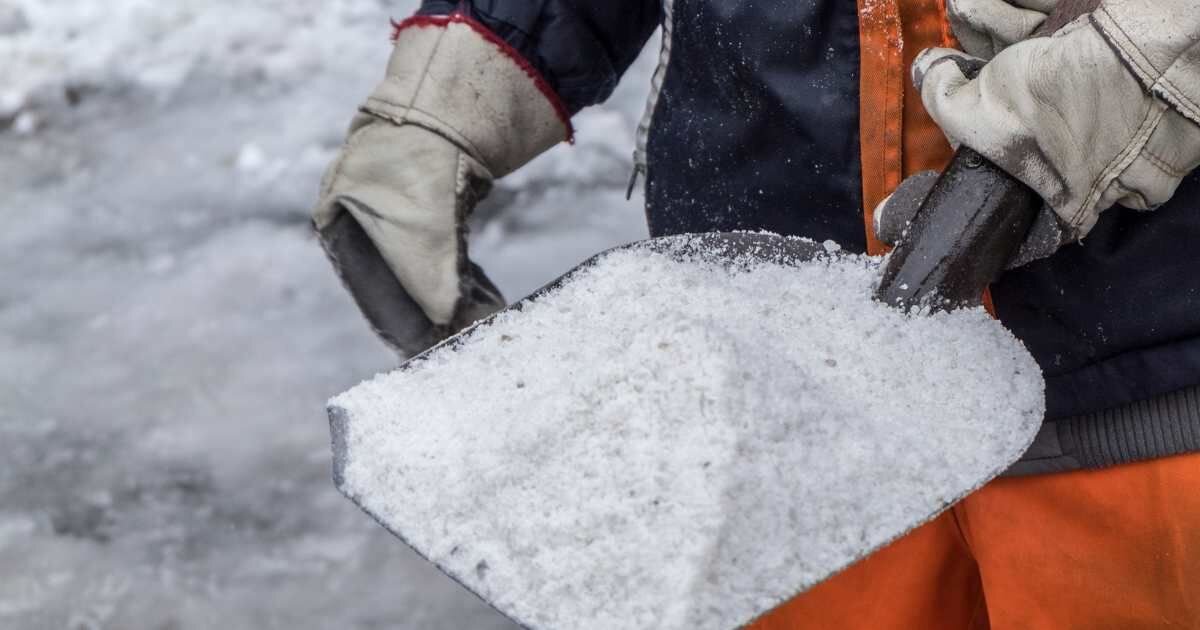
Accessibility and wintertime are both hot topics this time of year – but how do they relate? Simply put, when outdoor spaces are impacted by the natural effects of winter, i.e. snowy sidewalks and ice, they’re a nuisance and hazard to everyone. But for those who use mobility aids or who have vision loss, snow and ice removal are even more essential to make sure they can get from point A to point B, safely.
Fortunately, the experts at Classic Displays are no strangers to landscaping and snow removal needs. We want to offer you tips and tricks to make safe and accessible outdoor spaces the norm this winter. Not only do clear pathways keep you and your loved ones safe, but they also maintain the beauty of the city’s landscape.
Our Salt/Storage bins are suitable for sand, salt, trash, or anything requiring top-tier protection from the elements. They make it possible to keep your walkways ice and snow-free and keep the surrounding landscape neat and tidy.
Without any further hesitation, let’s explore some ice and snow and ice removal tips for safer sidewalks this winter.
When walkways are completely doused in ice and snow, it presents a safety hazard. Slips, trips, and falls are a real concern when snow and ice are littering the ground. If someone takes a tumble, that can be a significant issue for a city or township that didn’t appropriately manage the local landscape and do preventative and current snow and ice removal.
When it comes to accessibility, people with mobility challenges can be at particular risk of snow and ice-related hazards.
When walkways are covered in ice and snow, there is a major risk to the area's overall accessibility. Here are some of the main risks:
Ice and snow make walkways slippery and uneven, increasing the potential fall risk. This is tenfold for people with physical limitations and mobility impairments, such as those who use a wheelchair, walker, cane, or crutches to get around safely. These falls can cause serious injuries.
Snow and ice can completely block or narrow down a pathway, making it not only difficult – but possibly even impossible for those who need wheelchairs or other mobility devices to navigate safely. If there’s even a small patch of ice or snow, serious accidents can happen for those who require mobility aids, meaning proper clearing and salting are required.
Individuals with vision loss must rely on clear and consistent pathways to avoid potential issues. Snow and ice can obscure curbs, stepways, and other important walkway features – meaning possible accident-causing hazards are hard or impossible to detect. This can lead to potentially serious accidents.
Snow and ice can make steps and ramps unusable, especially for those who have a tough time keeping upright or have limited strength. Without proper snow and ice removal, the difference between the surface and step may be hard, if not impossible, to detect.
If sidewalks aren't properly cleared of snow and ice, it limits access to public spaces for people with disabilities. This impacts their potential to interact with community services, participate in social activities such as holiday displays, or even access to transportation.
Snow and ice make surfaces uneven and difficult to navigate, even for people without a disability. But for those who require mobility tools or even prosthetics, having a completely uneven surface that is also slippery is a recipe for disaster.

There isn’t a one-size-fits-all solution to managing ice and snow, as it depends largely on your community and the climate where you live. While there are plenty of preemptive and modern measures to manage snow and ice, there are occasionally times where heavy snow and ice is unavoidable. While this is understandable, it’s ideal to make sure there are measures in place to manage snow and ice and keep public spaces accessible to the public at large.
This isn’t just an issue of safety, but public access and accessibility. As a company that regularly provides giant Christmas decorations this time of year to create stunning holiday displays, the idea that some people could miss out seems unacceptable. This is why Classic Displays also provides salt/storage bin options for the season.
Preemptive measures are important to ensure you can effectively manage snow and ice before the weather gets bad. While you can’t predict the elements, you can check the weather forecast and make sure you’re ready to tackle snow and ice removal the moment it happens.
It’s great to get ahead while snow and ice are sparse and light in the early season, allowing you to prevent buildup over the season. While bad weather is unavoidable, you can be prepared to tackle snow and ice as it happens by having easy access to salt and sand, while also having volunteers or city officials with shovels at the ready to remove snow and ice.
Slips, trips, and falls (STFs) are the leading cause of injuries that require hospital admissions for Canadians over the age of 65, according to statistics. Elder folks are more likely to require mobility devices to get around, so having high traffic areas clear of snow and ice is essential.
Slip-and-fall accidents are one of the most common types of property accidents in Canada. According to the Canadian Institute for Health Information (CIHI), there were 162,222 unintentional slip-and-fall injuries in 2020-2021, accounting for nearly two-thirds (59.5%) of all injury-related hospitalizations and emergency room visits that year.
That number is not only staggering but also very concerning for Canadian communities. Imagine wanting your community to participate in Christmas light displays or other holiday events and several people leave injured or just unable to attend.
Keeping high-traffic areas such as public sidewalks, parking lots, and public parks cleared of ice and snow is essential for ensuring accessibility.
See our blog on accessibility here.
When it comes to managing snow and ice removal, one of the biggest mistakes you can make is to wait until the snow and ice accumulation stops before you begin the removal process. Rather than wait, set a regular snow, and ice removal schedule – say, every two hours or so, depending on how long the bad weather is projected to last. This allows you to prevent a high saturation of snow and ice from accumulating.
Besides, time doesn’t stop just because of the weather. High-traffic areas can become oversaturated if you don’t set an appropriate snow and ice removal schedule, disabling members of the community from accessing those spaces until the elements are cleared.
When you're shoveling and laying down salt to remove ice, you could use some additional traction. Sprinkle sand over particularly slippery areas where you know you'll be working to make snow and ice removal easier. This rougher texture will stop you from slipping and falling while you clear the area of the elements.
Our salt/storage bins are perfect for holding both salt and sand, making it easy to access.

Choose a high-quality shovel with a good handle grip or a high-flow snow blower. Your tools need to be sturdy and easy to use, allowing you to remove as much snow and ice as possible. In the case of frozen patches of ice, you can use either a high-quality ice scraper or metal shovel to break up very stubborn ice.
Sand and salt should be used throughout to further the snow and ice removal process.
Sidewalks and entrances are the most regularly used outdoor spaces used by the community, meaning that it’s important to clear them out first and foremost. This allows everyone to come from the sidewalk and enter essential businesses and buildings as needed. This is even more important for those who have physical difficulties getting from point A to point B. You also need to focus on making sure ramps are also cleared of snow and ice.
At Classic Displays, we offer everything from commercial holiday displays to on-site furniture, including safety items such as our salt/storage bins and more. Our mission is to ensure all public spaces can be accessible, whether that means making salt easy to grab and benches are available to allow the community to sit.
Don’t allow your public parks of community access locations to be inaccessible and unsafe this winter. Reach out to Classic Displays today to see what options are available for you before that thick snow and ice blanket the streets and sidewalks.